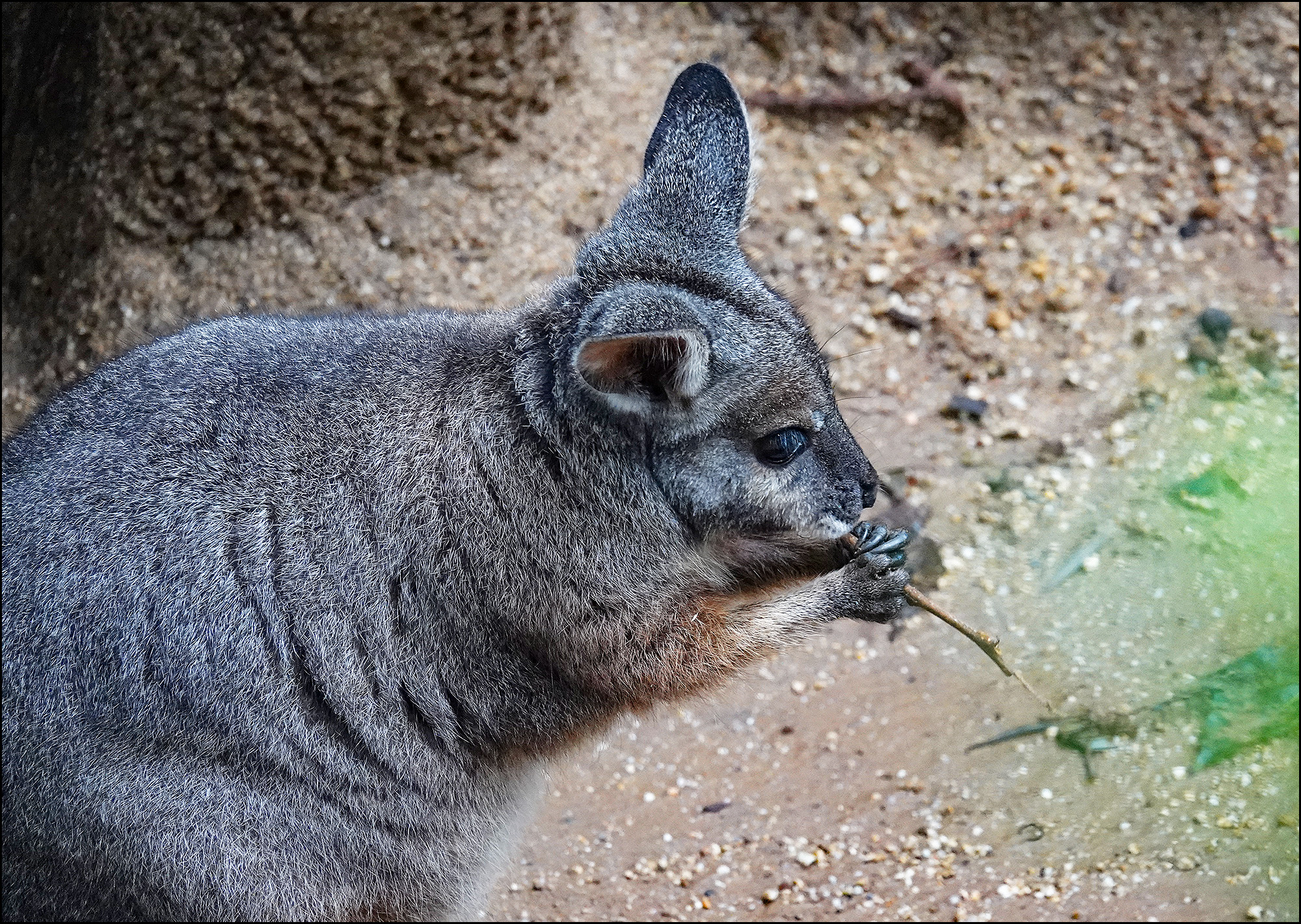Not everyone appreciated the green mamba snake last week, so here's a cute little wallaby chewing on a leaf. This particular brand of wallaby is a tammar wallaby, named after "thickets of the shrub locally known as tamma that sheltered it in Western Australia."
This of course just begs the question of where that got its name, but here our inquiry stops. Tamma sheoak, aka Allocasuarina corniculata, is apparently a huge pain in the ass, but Google says no more about it. In fact, most of the search results merely tell you that it's the source of the name of the tammar wallaby. Anyone feel like digging a little deeper?


ChatGPT is your friend! (of course, there is no way of knowing if any of this is true):
The name "tamma" is commonly associated with plants belonging to the genus **Allocasuarina**, particularly **Allocasuarina campestris**. These plants are native to Australia and are often found in Western Australia. The name "tamma" is derived from the Indigenous Noongar language, spoken by the Noongar people of southwestern Australia.
In the Noongar language, "tamma" is used to refer to certain species of she-oaks or casuarinas, particularly those that are prominent in the landscape of the region. The use of indigenous names for plants is a common practice in Australia, reflecting the rich cultural heritage and deep ecological knowledge of the Aboriginal peoples.
### Further Details:
- **Allocasuarina campestris**: This species is a shrub or small tree native to the sandy and gravelly soils of Western Australia. It is well-adapted to the dry conditions of the region and plays an important role in the local ecosystem.
- **Noongar People**: The Noongar people have inhabited the southwestern corner of Australia for tens of thousands of years. Their language and cultural practices include a profound understanding of the local flora and fauna, which is reflected in the naming of various plant species.
By using indigenous names like "tamma," there is recognition and respect for the traditional ecological knowledge and cultural heritage of the Noongar people.
Next week, Wallaby vs Green Mamba?-)
OMG, you shaved Charlie!!!
You wanna know? Ask the OED. As you might expect, it is of aboriginal origin. Here is a hint: saying "tammar wallaby" is borderline redundant since tammar IS a word for wallaby. The OED gives the following attestations, the earliest appearing in a scientific journal.
[1892 A. Zietz in Trans., Proc., & Rep. R. Soc. S. Austral. 1891–92 XV. 18 Macropus eugenii. Dama or Kangaroo Island Wallaby. 1924 F. W. Jones Mammals S. Austral. ii. 240 The Dama Wallaby group was widely spread over the southern portion of Australia.] 1926 K. S. Prichard Working Bullocks iii. 27 The great days they had spent together, as youngsters, hunting‥tammas, in the Paper Bark swamps. 1941 E. Troughton Furred Animals Austral. 193 Dama Pademelon; Tammar. 1970 W. D. L. Ride Guide Native Mammals Austral. v. 48 Tammars are able to survive on food containing little water. 1979 Nature 5 Apr. 549/2, I therefore examined the role of the neural pathway from the mammary gland in tammar wallabies carrying diapausing embryos.
Paddymelon has a similar origin.
I'm going with:
The Aborigines called the little animal "tammar" and thus the shrub in which the tammar sheltered the "tammar's shrub" (except in their language). And then, through poor enunciation, we got "tamma".